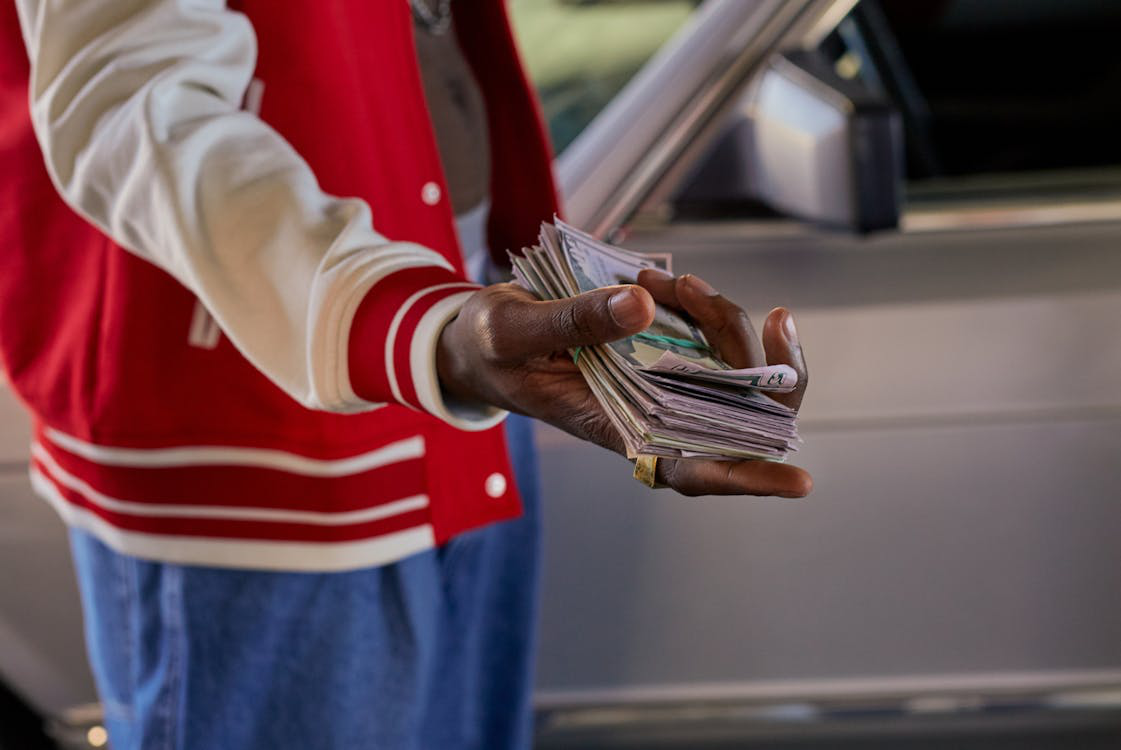Filing for bankruptcy doesn’t necessarily mean waving goodbye to your vehicle. In fact, it’s one of the most common questions people have when considering this financial reset: “If I file for bankruptcy, do I have to give up my car?” For most Texans, especially those living in car-dependent areas like Corpus Christi or McAllen, that question isn’t just about convenience — it’s about survival. Whether it’s for work, school drop-offs, or running basic errands, your car is a lifeline.
Here’s the good news: depending on your specific situation, there’s a solid chance you’ll be able to keep your vehicle. Thanks to state and federal exemption laws, reaffirmation agreements, and other protective strategies, bankruptcy may offer a way out without stripping you of the keys to your livelihood.
Let’s break down what that really looks like — and how it plays out under Texas law. (And if you’re curious about broader financial implications, check out this Forbes guide on bankruptcy.)
Bankruptcy Basics: Chapter 7 vs. Chapter 13 and Your Car
Bankruptcy in Texas typically falls under Chapter 7 or Chapter 13, and each chapter treats your vehicle a little differently.
- Chapter 7 is often referred to as liquidation. Here, the court appoints a trustee who evaluates your assets and may sell non-exempt property to repay creditors.
- Chapter 13, on the other hand, is a reorganization plan. You’ll pay back some or all of your debts over a three- to five-year period, which allows more flexibility with assets like your car.
The real kicker is how exemptions apply — and in Texas, they’re pretty generous.
Texas Motor Vehicle Exemption: One of the Best in the Country
Texas residents filing for bankruptcy can choose between federal or state exemptions, and most opt for the state route because it offers a full exemption for one motor vehicle per licensed household member. That’s right — if each person in your household has a license, you can potentially exempt one car for each.
So, let’s say you and your spouse both have valid licenses: you could keep both cars. If your teenage child also has a license and drives, that’s three vehicles that can be protected under the Texas exemption. And the law doesn’t care how much those vehicles are worth — there’s no dollar cap as long as it’s used for personal, family, or household purposes.
If your car is paid off, this exemption is your best friend. If you’re still making payments, things get a little trickier (but far from impossible).

Reaffirmation Agreements: Keeping Your Car With an Auto Loan
Got a car loan and worried about it? You’re not alone. Most folks haven’t paid off their vehicles completely. Here’s where reaffirmation agreements come in.
A reaffirmation agreement is a legally binding document that says, “Hey lender, I still want to keep this car and pay for it — bankruptcy or not.” The lender agrees you sign on the dotted line, and your car loan survives the bankruptcy discharge. You keep the car, and payments continue just like before.
But proceed with caution — reaffirming debt means you’re still personally liable. If you default later, the lender can repossess the car and sue you for the remaining balance. So, if you’re reaffirming, make sure those monthly payments are within your budget. If not, bankruptcy may be a better approach if that is not an option.

What Happens If You’re Behind on Payments?
If you’ve missed a few car payments, bankruptcy may still offer a shot at saving your vehicle — but timing and strategy matter.
- In Chapter 7, lenders can usually still repossess the car unless you bring the loan current quickly or reaffirm it. The bankruptcy doesn’t erase your obligation to pay secured debts (like auto loans) unless the car is surrendered.
- In Chapter 13, however, you can catch up on missed payments over time. This type of filing lets you restructure the debt into a manageable plan. It’s especially useful if you’re several months behind but want to keep the vehicle.
That said, if your car’s already been repossessed but not yet sold, filing quickly might help get it back.
What If the Car’s Value Exceeds the Loan Balance?
Say you owe $5,000 on a car that’s worth $15,000. Congratulations — you have equity! But be careful: the court may view that equity as an asset.
In Chapter 7, any equity that’s not covered by exemptions could theoretically be seized to pay creditors. Fortunately, the Texas motor vehicle exemption usually shields the full value. In more complicated cases, people may also tap into the wildcard exemption — though that depends on whether you opt for federal or state exemptions.
With Chapter 13, you just continue making payments and can often keep the car, regardless of equity.

Voluntary Surrender: When Letting Go Is the Better Call
In some situations, keeping the car doesn’t make financial sense — especially if you’re upside down on the loan (meaning you owe more than the car’s worth) or if repairs are piling up. You do have the option to surrender the vehicle voluntarily during bankruptcy.
Surrendering doesn’t mean you’re a failure. It means you’re making a strategic decision. After the surrender, any remaining loan balance is typically discharged in Chapter 7. No more stress about keeping up with a high monthly payment or fixing a car that’s on its last legs.
Repossession Threats and Bankruptcy Protection
Auto lenders don’t mess around. In Texas, they can repossess a vehicle without going to court — as long as it’s done peacefully. But filing for bankruptcy places an automatic stay on all collection actions, including repossessions.
That means the moment you file, creditors must back off. If a lender tries to repo your car after you’ve filed, that’s a big no-no. You can work with a repossession lawyer in Corpus Christi to help enforce your rights if this ever happens.

Leased Vehicles: A Different Beast
Have a lease instead of a loan? You still have options. In bankruptcy, you can choose to:
- Assume the lease – You keep making payments and stay on the lease.
- Reject the lease – You walk away and discharge any early termination fees.
Assuming the lease only works if you’re current or can quickly catch up. If you’re way behind, rejection might make more sense.
What About Luxury Cars or Second Vehicles?
The Texas exemption only covers one vehicle per licensed household member — so if you’ve got an extra car or a high-end model used for recreation, you might be out of luck.
Luxury cars like sports cars, classic cars, or those not used for regular family purposes are not typically protected. If your extra vehicle isn’t exempt, the trustee may sell it and use the proceeds to pay creditors. This is more relevant in Chapter 7, where liquidation is central.
In Chapter 13, however, you can usually keep the second car if your repayment plan accounts for its value — but expect a higher monthly plan amount.

Can You Buy a Car After Bankruptcy?
Absolutely. Bankruptcy isn’t the end of your financial life — far from it. Many people finance new vehicles shortly after discharge, especially if they have income and a manageable debt-to-income ratio.
Yes, interest rates may be higher at first, but building credit back up is doable. Start small, make on-time payments, and within a few years, you’ll be in a stronger financial position than before bankruptcy.
But let’s dig deeper because this question deserves more than just a “yes, you can.”

Life After Bankruptcy: What Lenders Look For
Lenders aren’t just looking at your credit score post-bankruptcy — they’re evaluating your overall risk. They want to see that you’ve stabilized your income, kept up with your new debts, and are actively trying to manage your finances responsibly. If you’re holding down a steady job, have a budget in place, and haven’t racked up any new delinquencies, you’re already on the right track.
And here’s the unexpected twist: some lenders actually view bankruptcy filers as better candidates than folks who are struggling but haven’t filed. Why? Because you can’t file another Chapter 7 for eight years. To them, that means less risk of you defaulting again.
How Long Should You Wait?
Technically, you can apply for a car loan the day after your bankruptcy is discharged. But is that the best move? Not always. Waiting a bit can help you get better rates and terms.
Here’s a rough timeline:
- 0–6 months after discharge: Higher interest rates, limited lenders. If you really need a car, consider a used one with a smaller loan amount.
- 6–12 months after discharge: You may qualify for slightly better terms, especially if you’ve established some new credit, like a secured credit card or small installment loan.
- 12+ months after discharge: You’re in much better shape. By now, you’ve probably rebuilt some credit and can negotiate better deals.
Timing is key. If your current car is holding up and you can wait a few months, it could save you thousands in interest.

Dealership Financing vs. Bank Loans
Not all financing sources are created equal. Dealerships often work with “special finance” departments that cater to bankruptcy filers. These lenders charge higher rates but are more flexible.
Banks and credit unions, on the other hand, might offer better rates — but only if you’ve done some credit rebuilding. Start with your current bank. If you’ve had a checking account in good standing with them, they may be willing to give you a shot.
Another option? Online lenders that specialize in bankruptcy car loans. They know your situation and often have pre-qualification tools that won’t ding your credit.
Tips to Score the Best Possible Deal
Here’s how to get the most out of your post-bankruptcy car-buying journey:
- Know your credit score – Pull your credit report from all three bureaus. Make sure there are no errors and that your discharge is reported properly.
- Set a budget – Just because you can borrow doesn’t mean you should max it out. Stay within a payment range you can handle.
- Make a down payment – Even a few thousand dollars upfront can dramatically reduce your loan’s interest rate and total cost.
- Shop around – Don’t take the first offer. Compare rates from multiple lenders before signing anything.
- Consider a co-signer – If you have a family member with good credit who trusts you, their backing can help you land a better loan. Just make sure you’re both clear on the responsibilities.
- Avoid “buy here, pay here” traps – These lots often charge sky-high interest and offer subpar vehicles. Be cautious and read the fine print.
- Keep loan terms short – Try to avoid stretching your loan over 72 or 84 months. You’ll save money in the long run with a 36- or 48-month term.
Rebuilding Credit While Driving
Financing a car after bankruptcy isn’t just about getting from point A to point B. It’s an opportunity to rebuild your credit. Every on-time payment you make helps boost your score. In fact, auto loans tend to have a big impact because they’re considered installment loans — exactly the kind of mix credit scoring models love to see.
Make your payments on time, don’t take on more credit than you can handle, and in 12 to 24 months, you’ll likely qualify for refinancing or even your dream car at a prime rate.
Final Thoughts: It’s Not Always About Losing — Sometimes, It’s About Starting Fresh
So, can you keep your car if you file for bankruptcy? In many cases, yes. With the right legal guidance and a clear understanding of Texas exemption laws, reaffirmation agreements, and filing types, you’re not as powerless as you might feel.
Whether you’re trying to catch up on payments, stop a repossession, or simply get your financial house in order, know that options exist. The bankruptcy system isn’t built to strip you of everything — it’s designed to offer a fair shot at rebuilding.
And in a state like Texas, where a car is more than just transportation, that really matters.
Get Back on the Road with a Fresh Start
Are you burdened with insurmountable debt? If you’re wondering whether bankruptcy might help protect your car and give you the breathing room you need, turn to a trusted debt relief law firm in TX. At the Law Office of Joel Gonzalez, they have a track record of high client satisfaction and real results.
Whether you’re facing a foreclosure lawsuit, repossession, or relentless collectors, their experienced debt relief attorney in Corpus Christi, TX, can evaluate your case and help you find the best option. Don’t wait—call now and start your path toward financial stability today.








